Who needs a catwalk at the London Collections Men’s SS19? Martine Rose takes to the street
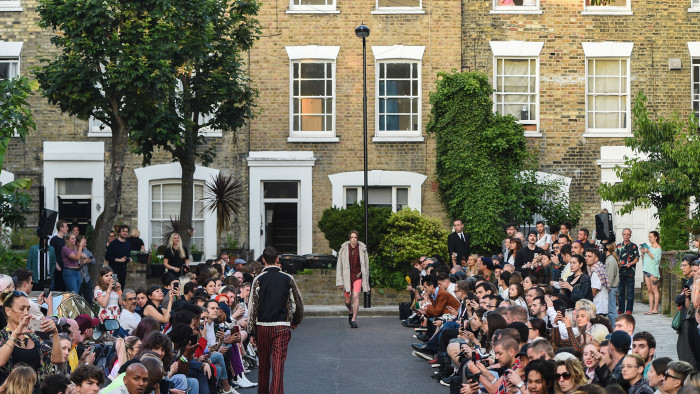
Simply sign up to the Life & Arts myFT Digest -- delivered directly to your inbox.
A few minutes before her spring/summer 19 show on the Sunday evening of London Fashion Week Men, Martine Rose pulled up in her BMW. This was not tardiness. The catwalk was actually the Victorian cul-de-sac St Leonard’s Square in Kentish Town, north London. There was no space for a temporary backstage in the tightly built street. Martine and her team had gotten the models ready in a pub round the corner.
“I know the community here,” says Rose, after the show. The sister of her long-term stylist, Tamara Rothstein, lives on the street. “It’s an amazing road. I knew the people would be up for it. I knew they’d be hanging out their windows, in their gardens. That was the point. It was about community.”
This was the sort of show that makes going to fashion week worthwhile. The clothes were great, an off-kilter mix of tech, tailoring, logos, denim and a series of knits like you’d just left a 90s rave at dawn. The location gave it all heart. “London’s going through a funny time at the minute,” says Rose. “It needs a bit of love.”
The show confirmed Rose’s status as London’s most important outsider. She has worked on her own terms since she started her label in 2007, and was long ignored by the fashion establishment, often with barely any money to make a collection. Gradually her designs have taken on cult status, and since 2016 Rose has been menswear consultant to Demna Gvasalia at Balenciaga, Kering’s quickest growing brand. At the recent Financial Times Business of Luxury summit in Venice, Balenciaga CEO Cedric Charbit said its growth is being fuelled by millennials and men.
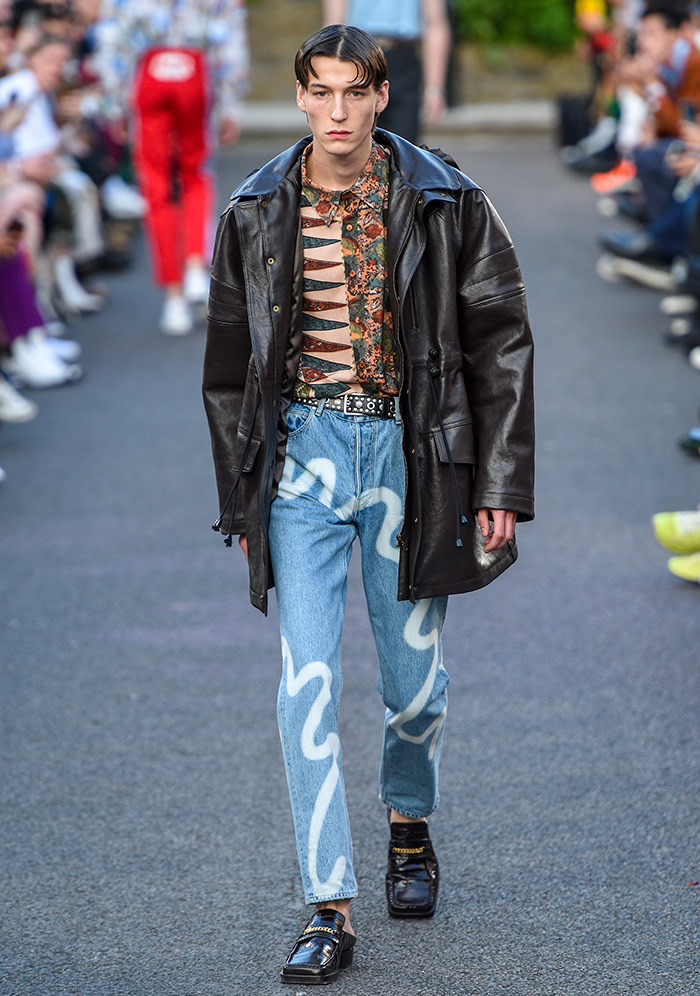
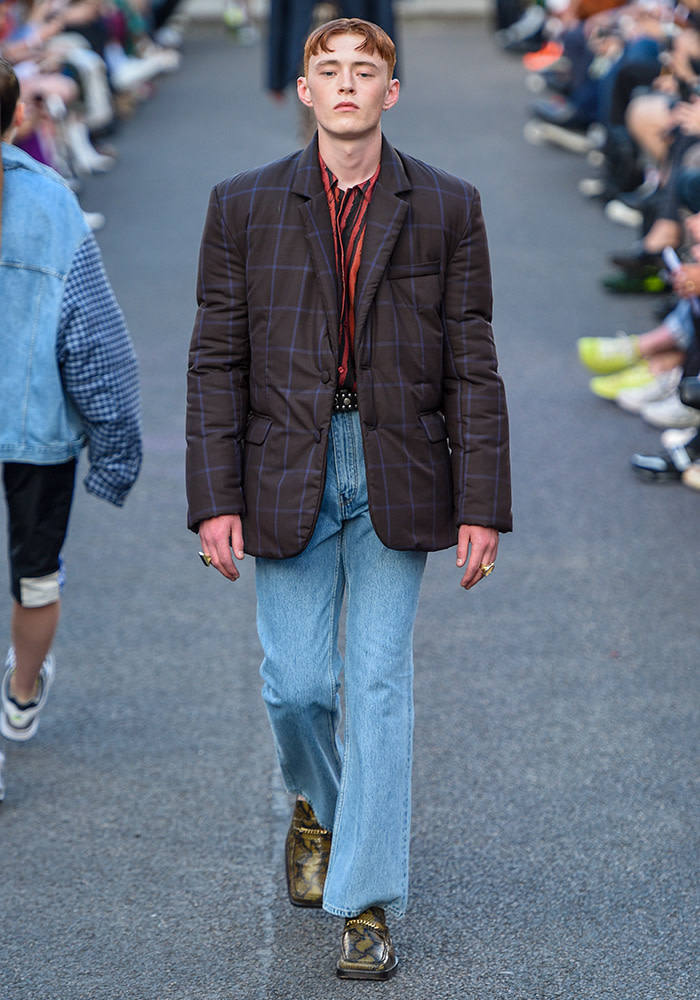
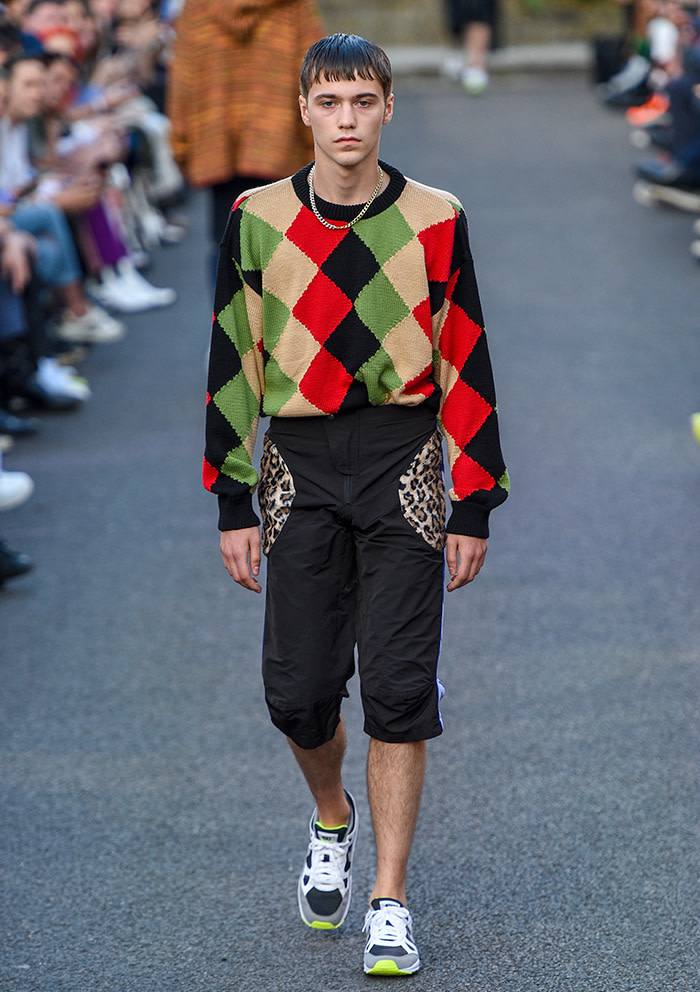
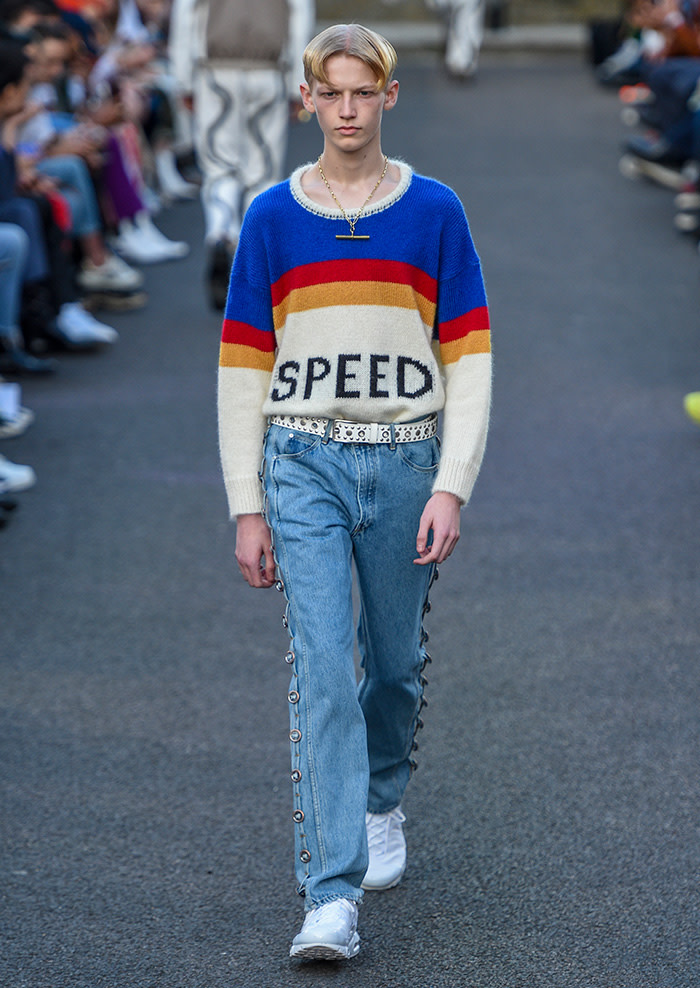
Such success could go to some designer’s heads. Not Rose. During the show, local kids sat on walls, or danced to the soundtrack on paths. One resident has lived on the street since the party for the Queen’s jubilee in 1977. Many of the models came from the local neighbourhood. Rose brought together different eras of what men might have worn on these streets: bleached jeans, a Hawaiian shirt, and what she calls a leather bomber inspired by the one worn by Dennis Waterman in Minder.
The knits were the showstoppers: rave knit hoodies with colour blurred lines like interference; an oversize diamond knit like the best charity shop find; a sweater with bands of colour and the word SPEED in black on white. At the end, food came out on trays. If only it could have gone on all night. Curfew was 9pm. And then? Everyone was invited down the pub.
“This is my high,” said Samuel Ross, the 27-year old behind A-Cold-Wall after a strong runway show of technical zip-ups and cargo pants that were cut jagged with geometric shapes. Ross started the A-Cold-Wall in 2015. Last season the brand did £3.5m business. He was a recent finalist for the LVMH Prize. “I love the stress,” he said. “I still have glue on my hands from 4am last night.”
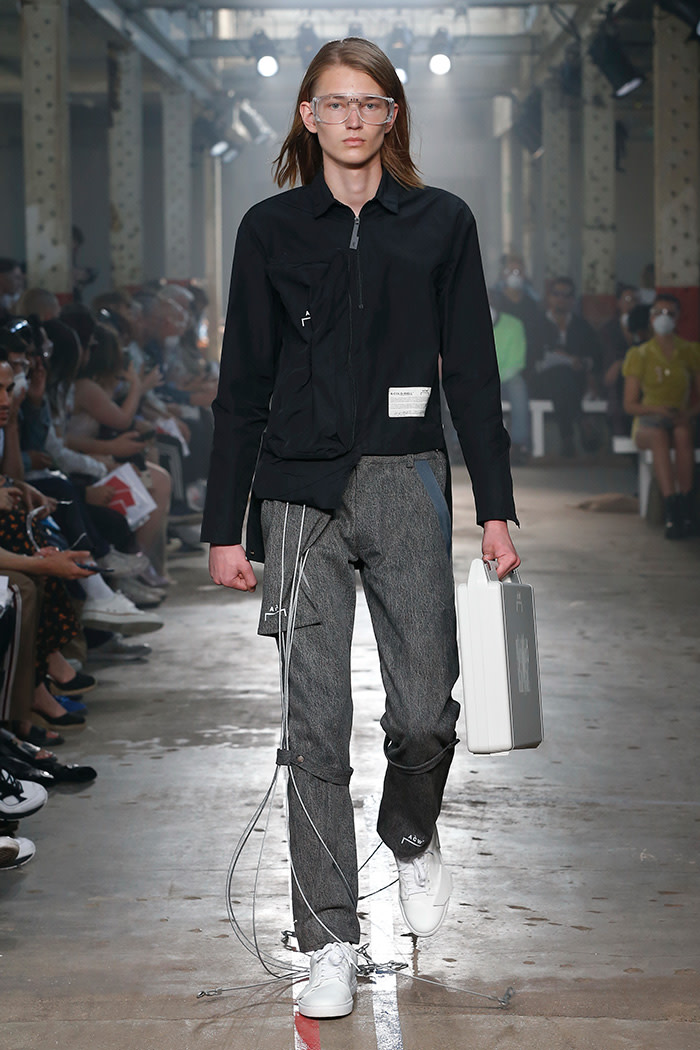
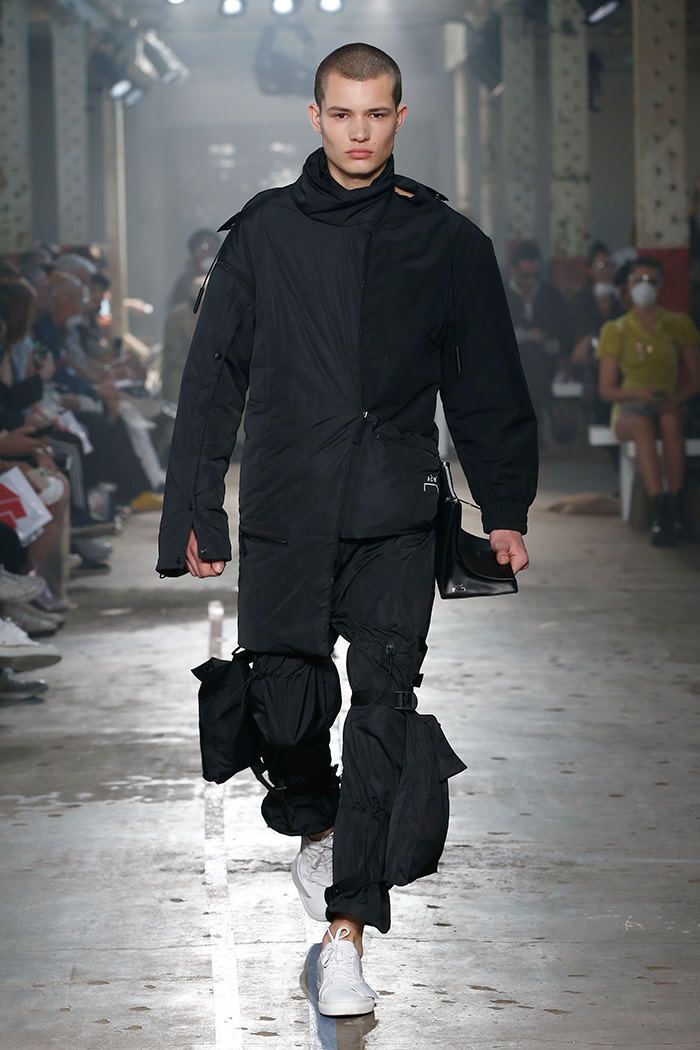
That glue was to build a box of polystyrene, which was shattered to reveal a naked model in what was meant to be amniotic fluid. That was the finale, but it had been high concept from the off. Guests were given facemasks and goggles to protect from the dust whipped up by industrial fans, and earplugs to cope with the soundtrack’s volume. What a pleasure it was to hear nothing. Sensory deprivation: a new first in fashion shows.
This was valid conceptualism. Three times in the show, models walked in the middle of white frame structures that were carried around them, representing the architecture of psychological space. Ross was exploring the effect of urban environments on the young people that grow up within them, and the desire to break free. “I’m the only one who can really tell this working class story,” he said.
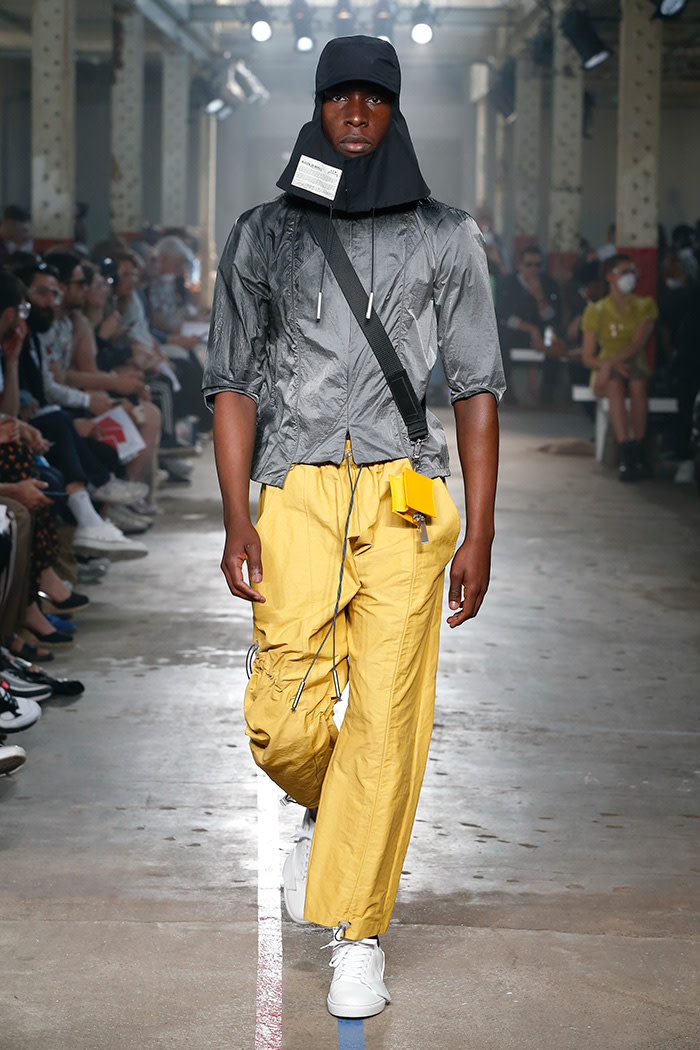
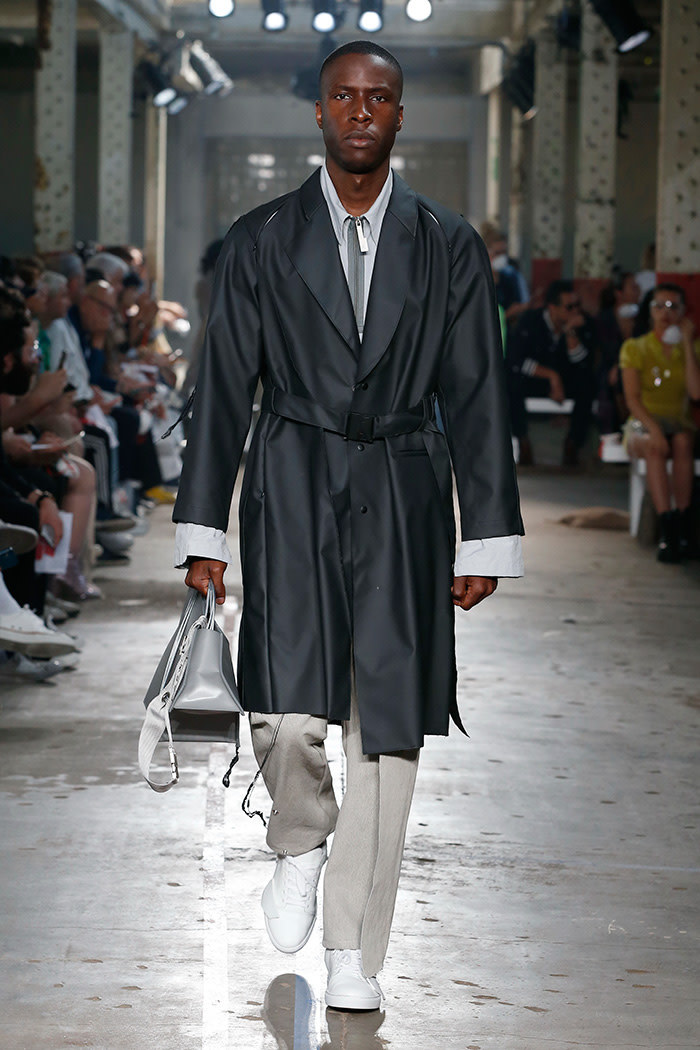
Ross grew up in Wellingborough, a Northamptonshire town that feels left behind. I know it well — my Nan lived there. It’s remarkable to see Ross take his experience of British provincial decline and give it international sheen. Sat front row was Virgil Abloh, the new creative director of menswear at Louis Vuitton, who once employed Ross as a creative assistant. After the show, Ross was asked if he’d consider a position as creative director of a luxury house. “With time,” he said. “I’m in no rush. I want to make sure I’m ready to do that.”
The future of standalone London menswear shows is in doubt. This season, there is not one brand on the schedule with the financial clout to draw top editors or buyers to the city. What remains is the creative intelligence, questioning and compassion that has long defined London fashion. Art School showed their best collection yet, a powerful display of garments cut for trans and queer bodies. They showed as part of Fashion East’s MAN show, an incubator that each season gives show space to three young brands. For Art School the mood was elegiac. Models often purposefully stumbled, lay on the floor, helping each other up. The look was dresses, tailoring, often cut on the bias. “It creates this malleable flexibility in the garments for our trans wearers,” said Eden Loweth, one half of Art School. “It’s really comfortable and it can evolve as their body physically changes.”
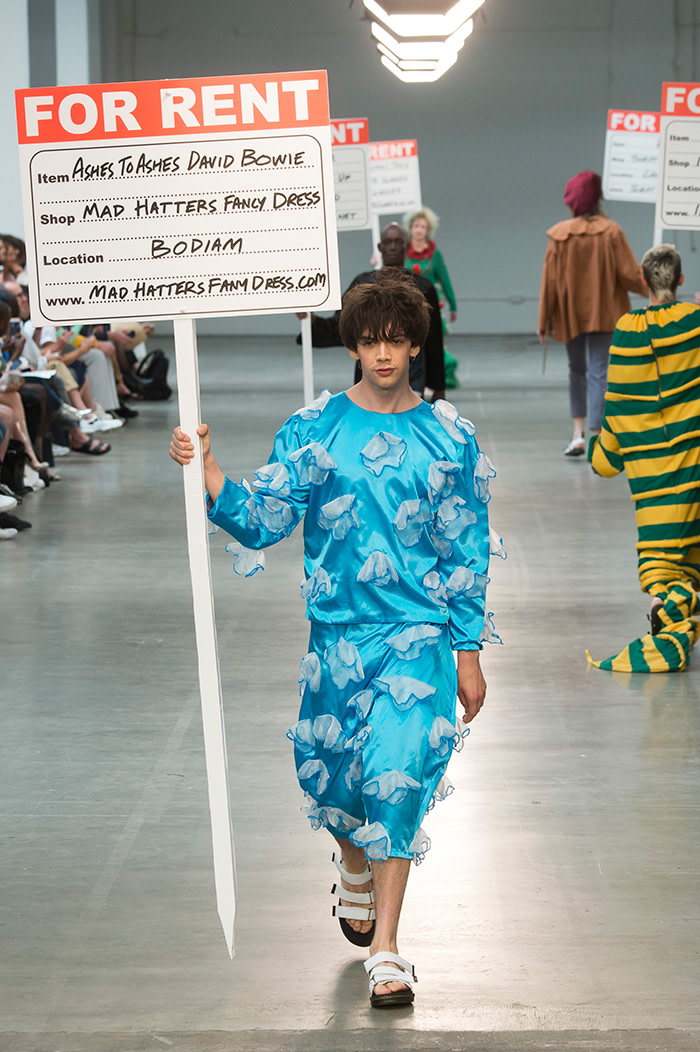
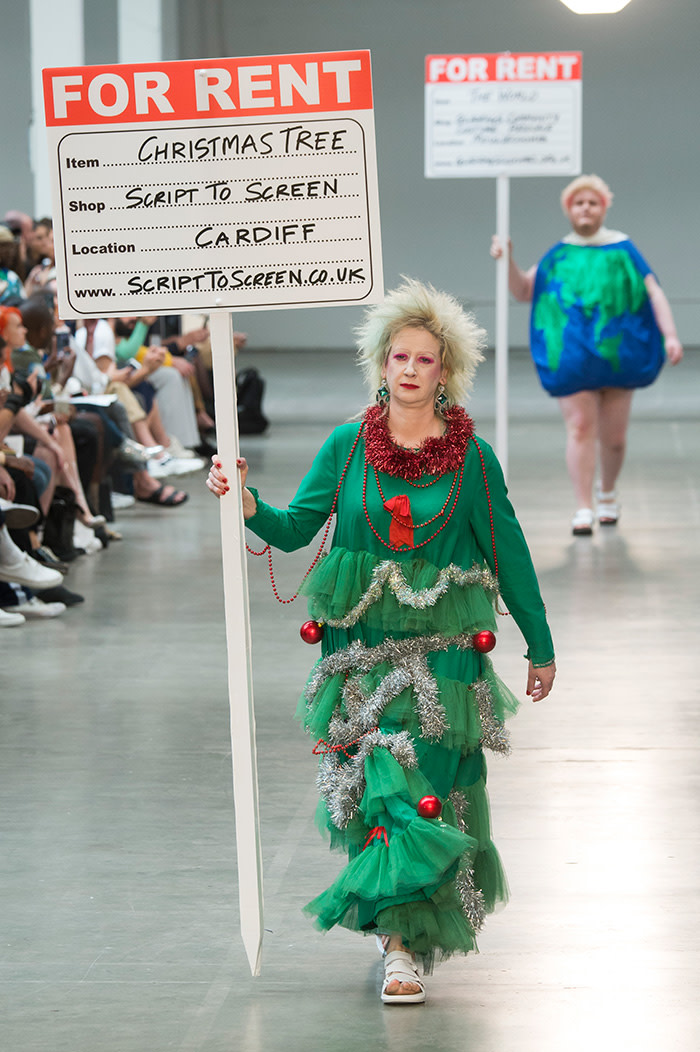
The binary of commerce means that Art School is mostly stocked in womenswear sections of stores such as Selfridges and matchesfashion.com, or worn by celebrities such as Rita Ora. “The reality of sales is really important for our business,” said Loweth,”but also what’s important for us is representing this community.”
Also on the MAN line-up, Rottingdean Bazaar created an entire collection hired from costume shops around the country, each model walking with a placard that gave the name of its supplier. Out came a ghoul, a worm, an Ashes-To-Ashes-era David Bowie. The resounding point: these catwalk shows are full of such unnecessary waste. So many new garments made, so little purpose. “It was pointing at other ways of accessing interesting things,” said Luke Brooks, one half of Rottingdean Bazaar. “They don’t have to come from people who call themselves designers.” It’s an abrasive attitude, but one this industry needs to hear, especially concerning waste and mass overproduction.
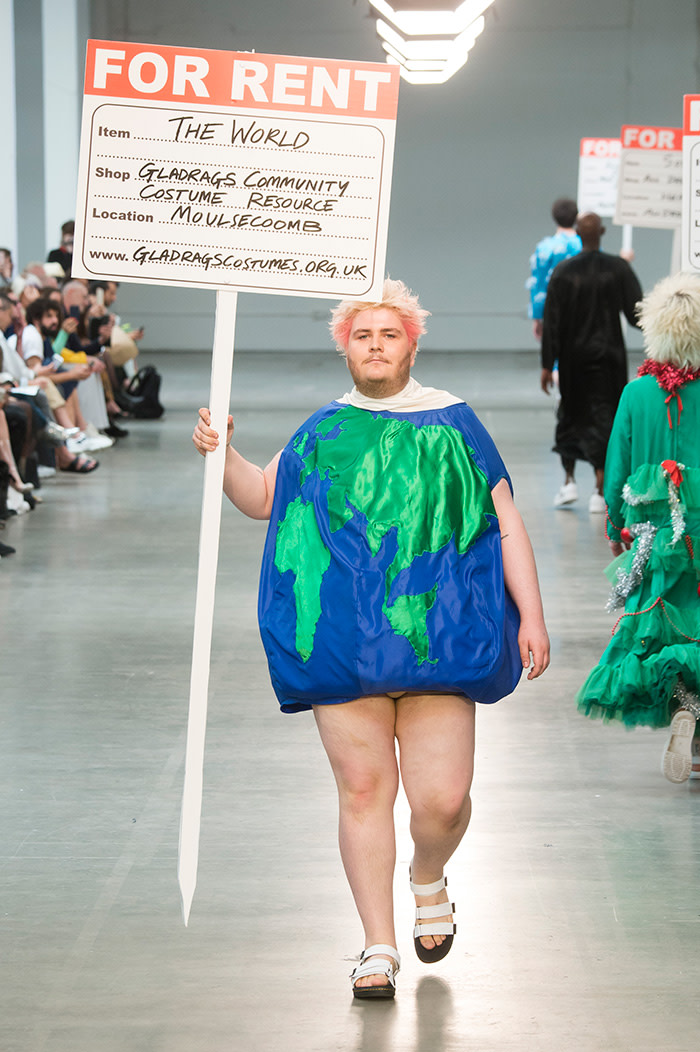
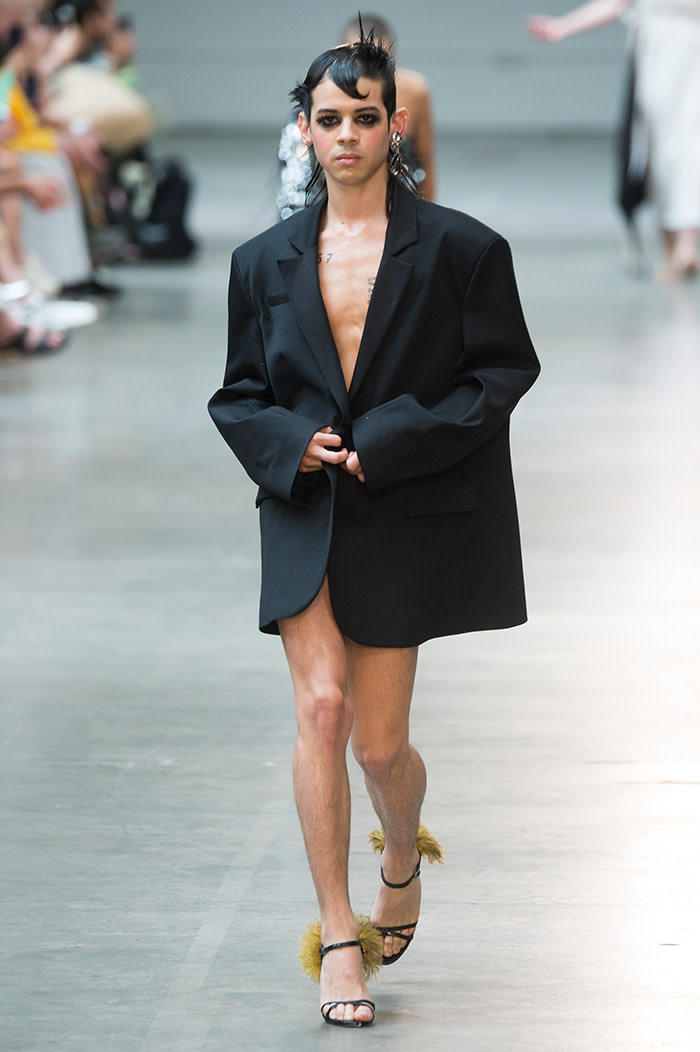
Quick mention of two strong new talents. Stefan Cooke was the third designer at the MAN show, sending out great plaid zip ups and pants in reds and blues that are purposefully too vibrant and therefore very right. Meanwhile, Bianca Saunders made her debut over the weekend, a year after graduating from the Royal College of Art. Saunders has an eye for precision in cut that is very rare, creating garments of modernity and desirability. It’s something as simple as the wide cut of sleeve of a T-shirt, or the crinkle texture of a plaid shirt. She is a talent to be nurtured, and watched.
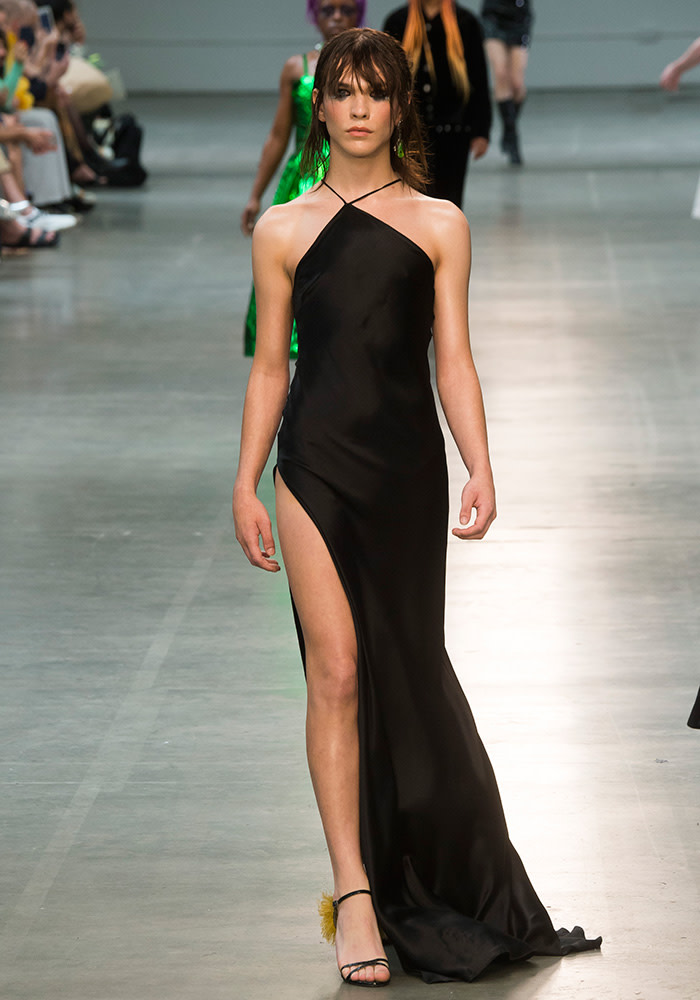
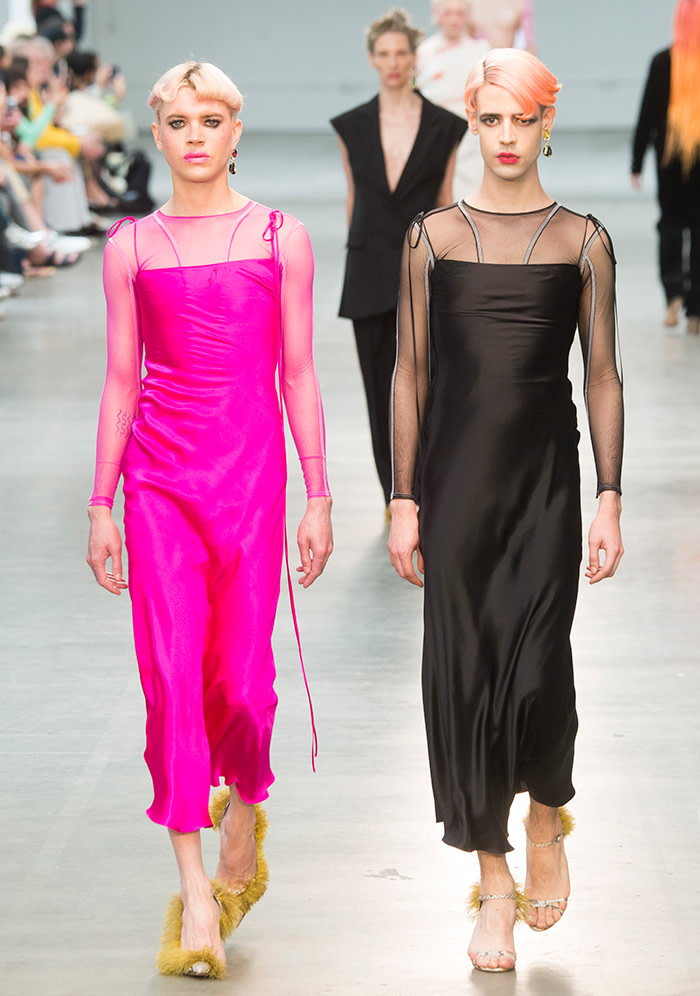
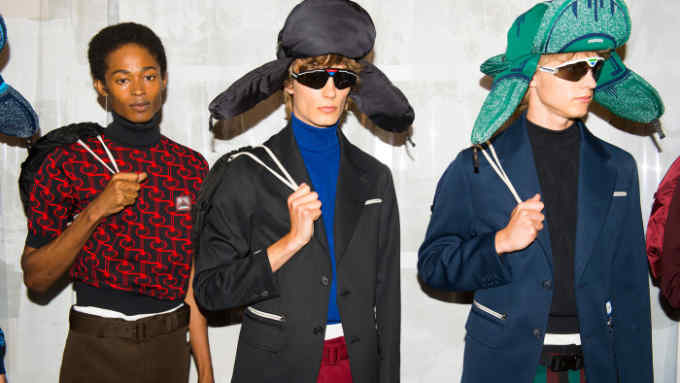
Comments